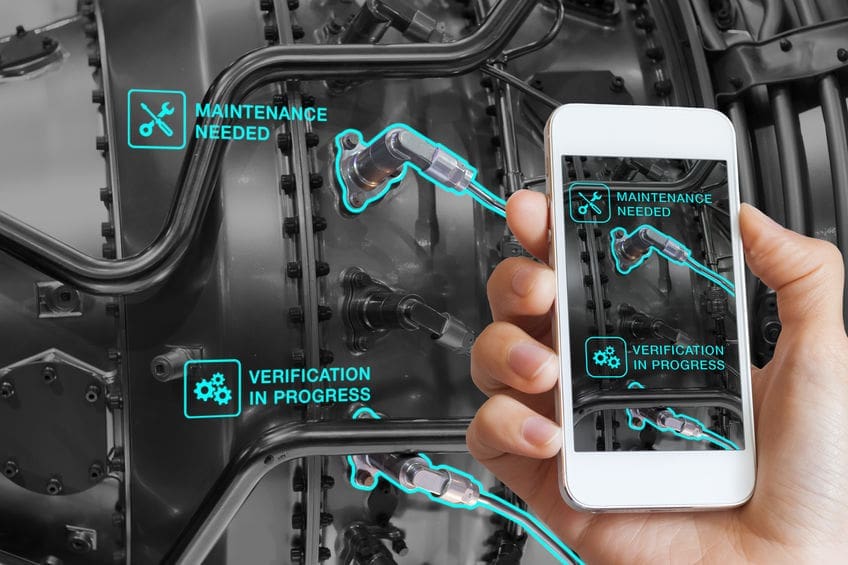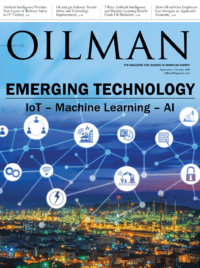There are all kinds of new technologies and up and coming software out there that are capturing our attention daily. It’s exciting to wait in anticipation for what is around the corner, metaphorically and literally, as you watch newscasters video the masses camping out waiting for the newest iPhone to arrive in stores. When you think “new and exciting technology” it’s possible that the energy industry sector is not the first one to come to mind as a beneficiary of such progress, but this industry has been a grateful recipient of many of these advancements and really, they’re just getting started.
The most exciting at the moment is not just a software though, it’s an entire experience. It’s the experience of Augmented Reality (AR). The most familiar and recognizable AR experience is probably Pokémon Go. Pokémon Go uses a real world environment where computer generated objects are placed within a game for people to play. While enhancing the perception of what is in front of them, it gives consumers a computer generated immersion into a real environment, which results in a fun and exciting altering of the normal world in which we live, so it easily explains its appeal.
Now imagine a far more advanced version of AR and what its emergence into the energy industry could lead to. The solutions it could provide are countless. One of the leading augmented reality multi-source knowledge platforms for enterprises is called Fieldbit. Fieldbit got its start in 2014 and is headquartered out of California. The augmented reality platform offers field service technicians rich, real-time information and guidance through interactive collaboration with experts and digital resources, enabling them to solve critical problems effectively and efficiently, thereby reducing the need for costly technician visits.
Previously, solutions were made on paper or on computers, which is still 2D. But with AR, there is a different kind of knowledge out there. Technicians in the field can interact with an expert located at headquarters for troubleshooting, which saves a company from a costly site visit. Everyone within an organization can look in on the environment at hand in real time through devices like phones, tablets or through smart glasses. With smart glasses, the experience is much more natural and efficient since people need their hands to work. Any way you choose, all of the information is presented in front of you and the ability to show and interact with digital information that is superimposed with physical objects is literally at your fingertips.
Evyatar Meiron, CEO of Fieldbit says “If you look at what an oil rig actually looks like – it is a very complex site with pipes, tanks, etc. Fieldbit aims to smooth the process of fixing an oil rig by creating a map that highlights where everything is located and flag exactly where a malfunction is so that the technician can easily locate the issue and fix it in real-time.”
With a technology as advanced as this one, it would seem that a large amount of time for training would go into learning about it. It’s actually such a small amount of training that it’s similar to applications on mobile phones. The application is started and the consumer just browses through it to see how it functions. In addition, there is not much training on the workforce side of things either. The knowledge sources for the technician is between the technician on site and the expert in the service center. There are three knowledge assets here: collaboration, visualization and the ease of integration of other enterprise software.
“The idea is to create an easier process for the technician and cost savings for the enterprise. So Fieldbit created a technology that is user friendly, informative, and does not require a lot of training for the technicians to get on board. Ease of use and simplification is our goal,” says Meiron.
Safety is another crucial benefit that AR offers. Many companies must monitor and obtain equipment in hostile environments. Having the ability to access the most up-to-date and compliant safety procedures in their field of view is an advantage that is hard to pass up. EMR rates can make or break a company and safety should be at the forefront of everyone in this industry. AR being able to take a step by step approach with an employee to ensure tasks are done safely and correctly is a huge advantage.
AR spans many industries, but it is not a stretch to say that the energy industry will thrive from this revolutionary technology. The ability to be the eyes, ears and hands on ground, no matter the location, is invaluable. The possibilities are endless when experts, owners, subcontractors, technicians, etc., can be on site and fully engaged, without physically being present. It is amazing and inconceivable to think that we’ve reached a time where this technology actually exists. It’s exciting to watch the merging of this kind of technology with the energy industry and we eagerly anticipate what is to come!
Sarah Skinner is a graduate of Louisiana State University with a degree in English. She has been a technical writer and editor in the oil and gas industry for over ten years in Houston and in Louisiana. She currently works as a technical writer for a pre-cast concrete construction company in Louisiana that builds blast-proof buildings for petrochemical plants.







